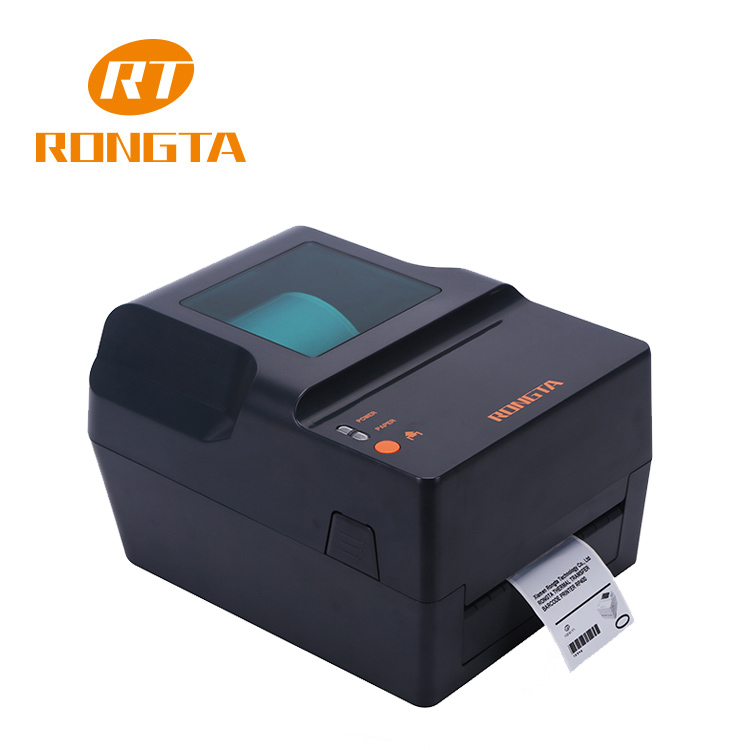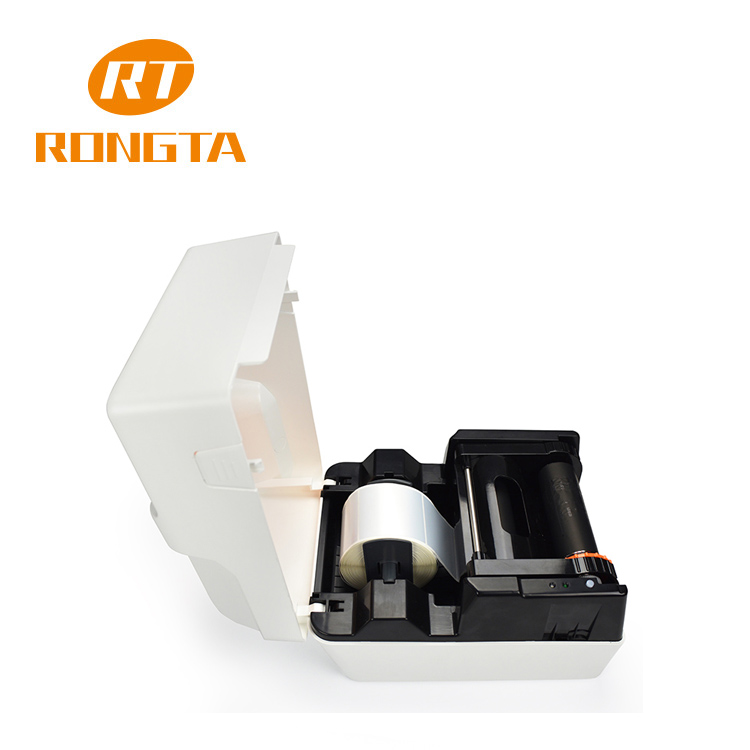

New products
RP425 4'' Thermal Shipping Label Printer Small size, high cost performance Convenient operation and label-saving design Strong compatibility, supports various terminal connections, and meets diverse business needs Free genuine Bartender editing software, printing is easier More
F82A A4 Front-eject Thermal Printer (with paper drawer) 1.Small appearance, light and portable, suitable for various usage scenarios; 2.Built-in paper bin for easy portability, no ink cartridges required, environmentally friendly; 3.The 0.96-inch square screen makes it easy to check the status, and the power button is fully functional and easy to operate. 4.54 hours of long-lasting battery life, say goodbye to battery anxiety. More
R5 Mini Label Printer 1. Suitable for multiple scenarios, a good helper for home storage, office documents, and school supplies management.; 2.Intelligent sensor, timely reminder to change paper, no need to set the paper size, more convenient; 3.Compact size, weighs only 180g, one-handed grip, easy to carry; 4.Contains a supporting APP with rich functions and novel interface, allowing you to perform various editing tasks at will. More
RP216 2 '' Desktop High-definition Label Printer 1. Supports high-definition two-color printing, large paper bin design, can load more label paper; 2. Equipped with advanced sensors, it supports printing a variety of consumables to meet various label printing needs; 3. Equipped with automatic paper peeling function, saving time in peeling the backing paper and improving quality and efficiency ; 4. Optional Bluetooth or WIFI to connect with various smart terminals. More
Latest News
From November 26 to 27, the Warsaw Expo Center in Poland was bustling with crowds. Rongta Technology (Stock Code: 9881.HK) and its subsidiary iMACHINE leveraged cutting-edge technologies to improve the efficiency and reduce costs in the retail terminal industry. Targeting t...
In industries such as logistics, warehousing, and retail, efficient and convenient printing equipment is key to improving productivity. The RP425 4'' thermal shipping label printer, with its compact and portable design, simple operation, and strong compatibility, is an ideal choice for small e-comme...
In today's fast-paced life and work, mobile office and home office have become the new normal. An efficient and convenient printing device can significantly improve work efficiency and quality of life. The F82A A4 front-eject thermal printer, with its compact and portable design and excellent perfor...
Difference Between Direct Thermal And Thermal Transfer Printer
Direct thermal printers utilize a chemically treated material that blackens when the thermal print-head applies heat to its surface.
· Requires no ink, toner, or ribbons
· Prints in black and white only
· May fade over time
· Costs less than thermal transfer printers
· Needs little maintenance or replacement of supplies
· Not recommended for high-contact use
· Great for common barcode applications such as shipping labels, receipt labels, receipts, and nametag labels
Because it uses heat to create the image, direct thermal printers don't require ink, toner, or ribbons. One of the benefits of this technology is the low maintenance costs — with fewer moving parts and pieces, there are fewer things that can go wrong. They're incredibly easy to operate and maintain.
While there are many upsides to using a direct thermal printer, users should be aware of some constraints. Firstly, that the printed area will fade over time. Because the paper is heat-sensitive, additional heat or excessive light could cause the entire paper to darken. This could make the text unreadable and the barcodes unscannable. For this reason, direct thermal printing isn't recommended for long-term use. Having said that, the printing technology still provides enough of a lifespan for many projects. Another limitation with direct thermal printers is their ability to only print in black and white. Where barcodes are fine with only black and white information, it doesn't allow for colored logos or graphics.


With thermal transfer printers, a thermal print-head applies heat to a wax or resin-based ribbon, which is melted to the label's surface. The ink is then absorbed into the label material.
· Requires a ribbon for printing
· Can print in color with the addition of a colored ribbon
· Won't fade over time
· Durable enough to withstand chemicals and extreme temperatures
· Good for printing logos and graphics
· Compatible with a wide variety of materials
· Ideal for product identification, inventory labels, and asset labeling
Because environmental factors will not alter the print quality, this type of technology is known to create an incredibly strong printed area that can withstand extreme temperatures and contact with chemicals. These printers are recommended for labels that need to last longer than six months.
An additional benefit of thermal transfer printing is the ability to print in color. With the purchase of a colored ribbon, you can print a logo, graphic, or text in the color of your ribbon. The color isn't specific to a graphic or individual block of text, however, the color applies to your entire label. Thermal transfer printers also have the ability to accept a wider variety of material types than their direct thermal counterparts. While we currently only provide paper-based label materials for thermal transfer printing, printing on polyester and polypropylene materials is possible.
One of the few downsides to thermal transfer printers is associated with the ribbons. They have to be replaced frequently to continue printing at a high quality. They are also more costly upfront.
Copyright © 2026 Rongta Technology (Xiamen) Group Co.,Ltd..All Rights Reserved. 闽ICP备14000025号-1
